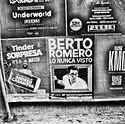Bruce
Member
All
How do you achieve color balance for gum prints?
I am trying to do Tri-Color gum and can't seem to get a decent print. Most are to muddy in color after my 3 coatings.
I assume I just have to work with the individual pigment strenghts as well as exposure time to get a balance I like.
What are your thoughts?
Thanks
Bruce
How do you achieve color balance for gum prints?
I am trying to do Tri-Color gum and can't seem to get a decent print. Most are to muddy in color after my 3 coatings.
I assume I just have to work with the individual pigment strenghts as well as exposure time to get a balance I like.
What are your thoughts?
Thanks
Bruce





